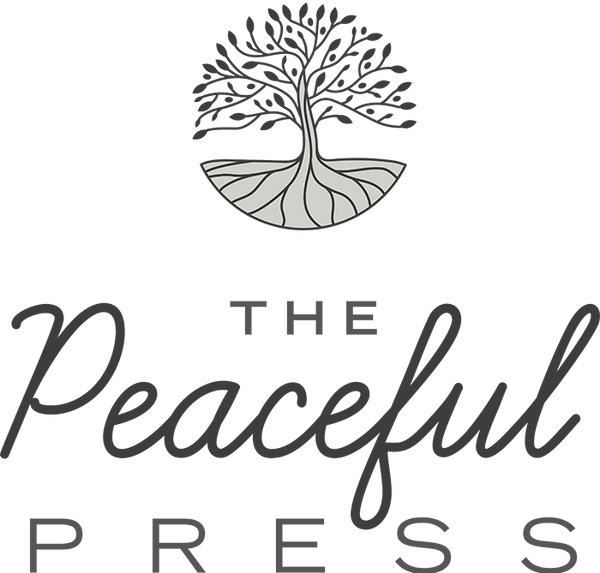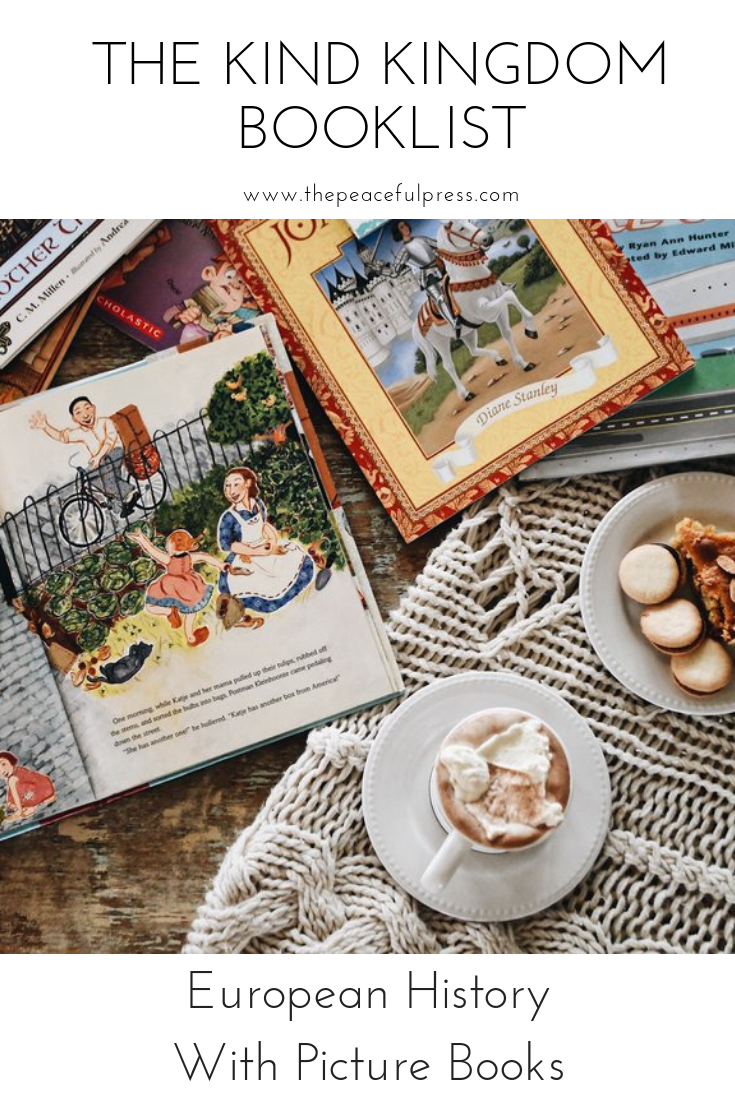We are excited to introduce the book list for our newest resource, The Kind Kingdom.
This resource provides a 30-week overview of European history, using the Narnia books, Grimm’s Fairy Tales, and Beautiful Stories From Shakespeare as a spine. The Kind Kingdom could be used along with Classical Conversations Cycle 2, or as a stand-alone Charlotte Mason-inspired resource.
As with our other resources, The Playful Pioneers and The Precious People, The Kind KIngdom includes Bible, language arts, science, history, art, practical skills, and cooking. We also include a monthly hymn and bi-weekly poetry selection. The student sheets include mapwork, and copy work corresponding with our Bible or poetry reading, along with quotes from inspiring people in history.
Some have suggested that we assign the Narnia readings in the order in which they were originally published, and while we researched the question, and its appropriate answer, we eventually came to this quote by C.S. Lewis,
“I think I agree with your order for reading the books more than with your mother’s. The series was not planned beforehand as she thinks. When I wrote The Lion I did not know I was going to write any more. Then I wrote P. Caspian as a sequel and still didn’t think there would be any more, and when I had done The Voyage I felt quite sure it would be the last. But I found as I was wrong. So perhaps it does not matter very much in which order anyone read them.”
If you disagree with the order and prefer to read The Lion, The Witch, and The Wardrobe first, feel free to do so. The Narnia readings can stand alone without affecting the flow of the curriculum.
As you read through the book list, you will see that each month has a theme. This is to allow you to approach it as a block study and to give you a framework for extra reading over the time period. You can easily find all of the books on Amazon (links are included) but we hope that families will borrow books from their local library, and you are free to substitute any of the science and history books for another book on the same subject. For instance, if the subject is Gutenberg and the printing press, you can find a different book about it, or even search a Youtube video for kids about it.
While we aim to make reading the larger part of our homeschool routine, one of the benefits of living in modern times is the ability to not just read about a subject, but to actually see the workings of machines, and nature, through the many amazing educational videos available. We recommend limiting screen time to allow for reading and imagination to develop, but interjecting a few minutes a day for educational videos is a fantastic use of technology in our opinion.
Weeks 1-4
Middle Ages, Botany, Harvest, Bees
The Magician’s Nephew by C.S. Lewis
Kings and Queens of England and Scotland by Pamela Egan
A Seed is Sleepy by Dianna Hutts Aston
A Favourite Collection of Grimm’s Fairy Tales Illustrated by Anastasiya Archipova
St. George and the Dragon by Margaret Hodges, Illustrated by Trina Schart Hyman
What Will The Weather Be by Linda DeWitt
The Kitchen Knight: A Tale of King Arthur by Margaret Hodges, illustrated by Trina Schart Hyman
Anywhere Farm by Phyllis Root, illustrated by G. Brian Karas
Our Island Story by H.E. Marshall
Alfred the Great by Jennifer Pepito
Explore My World:Honey Bees by Jill Esbaum
Robin Hood and the Golden Arrow retold by Robert D. San Souci.
Weeks 5-8
Kings and Queens of England, Homes, Seasons
The Lion, The Witch, and The Wardrobe by C.S. Lewis
Our Island Story by H.E. Marshall
A Year in a Castle by Rachel Coombs
How a House is Built by Gail Gibbons
A Favourite Collection of Grimm’s Fairy Tales Illustrated by Anastasiya Archipova
The Ink Garden of Brother Theophane by C.M. Millen
Brother William’s Year by Jan Pancheri
Around the Year by Elsa Beskow
You Wouldn’t Want To Work on a Medieval Cathedral by Fiona MacDonald
Week 9-12
Renaissance, Solar System, Gravity
The Horse and His Boy by C.S. Lewis
Our Island Story by H.E. Marshall
Leonardo da Vinci by Diane Stanley
A Favourite Collection of Grimm’s Fairy Tales Illustrated by Anastasiya Archipova
A Child’s Introduction to the Night Sky by Michael Driscoll
William Blake’s Inn by Nancy Willard
World History Biographies: Isaac Newton by Phillip Steele
The Moon Seems to Change by Dr. Franklyn M. Branley
Weeks 13-15
Reformation, Printing Press, Christmas
Fine Print by Joan Johansen Burch
Johann Gutenberg and the Amazing Printing Press
Marguerite Makes a Book by Bruce Robertson
The Life of Martin Luther by Agostino Traini
The Legend of St. Nicholas by Dandi Daley Mackall
The Clown of God by Tomie de Paola
Good King Wenceslas by John M. Neale
A Christmas Carol by Charles Dickens
Weeks 16-19
Exploration, Ships, Antarctica
The Voyage of the Dawn Treader by C.S. Lewis
The Holy Bible
The Endurance by Alfred Lansing
Shackleton’s Journey by William Gill
Shipwreck at the Bottom of the World by Jennifer Armstrong
DK Eyewitness Books:Explorer by Rupert Matthews
Beautiful Stories From Shakespeare for Children by E. Nesbit
Week 20-23
Revolution, Flight, Nursing, World War I
The Glorious Flight by Alice and Martin Provenson
National Geographic Readers: Planes by Amy Shields
A Picture Book of Florence Nightingale by David A. Adler
You Wouldn’t Want To Live Without Nurses by Fiona MacDonald
Where the Poppies Now Grow by Hilary Ann Robinson
Beautiful Stories From Shakespeare for Children by E. Nesbit
Christian Liberty Nature Reader Book Four edited by Edward J. Shewa
Weeks 24-27
World War II, The Holocaust, Invention
Always Remember Me: How One Family Survived World War II by Marisabina Russo
Star of Fear, Star of Hope by Jo Hoestlandt
Diana’s White House Garden by Elisa Carbone
The Little Ships by Louise Borden
Beautiful Stories From Shakespeare for Children by E. Nesbit
DK Eyewitness Book: Invention by Lionel Bender
Mercedes and the Chocolate Pilot by Margot Theis Raven
Boxes for Katje by Candace Fleming
Weeks 28-30
The Cold War and Communism, Spring, Baby Animals
From Tadpole to Frog by Wendy Pfeffer
How a Seed Grows by Helene Jordan
Nature Anatomy by Julia Rothman
Over and Under the Pond by Kate Messner
The Passover Lamb by Linda Elovitz Marshall
Spring, An Alphabet Acrostic by Steven Schnur
Where Do Chicks Come From by Amy E. Sklansky
So how much does the curriculum cost? Well, if you were able to find none of the books at the library, and no substitutes, you could still purchase all the books for around $300 for used copies, and build an impressive home library in the process. That, in addition to the $49 for the parent guide, student sheets, art, and recipes, plus whatever resource you are using for math or phonics would make a complete homeschool plan for the year.
However, we’ve organized the curriculum in such a way that you can easily do it with a very slim book budget. Each month has a theme and so if you are on a super tight budget, you can borrow the Narnia books from the library, read the free online version of Our Island Story, and even find free online versions of the Grimm’s Fairy Tales and Beautiful Stories From Shakespeare. Then, you just borrow books from the library that fit the theme for the month. If we are studying the Queens and Kings of England, ask your librarian for a stack of books on the subject, read those books that engage you, do the projects in the parent guide that correspond with the theme, and enjoy diving into history with your children.
Our resources are meant to bring families closer together, to spark new areas of interest, and to spread a feast of learning before your children that inspires them to dream big about how they too can impact the world for good.
Please e-mail us with questions as you get started, hello@thepeacefulpress.com.
This post contains affiliate links. Thanks for clicking through and supporting this site.
You may also enjoy:





